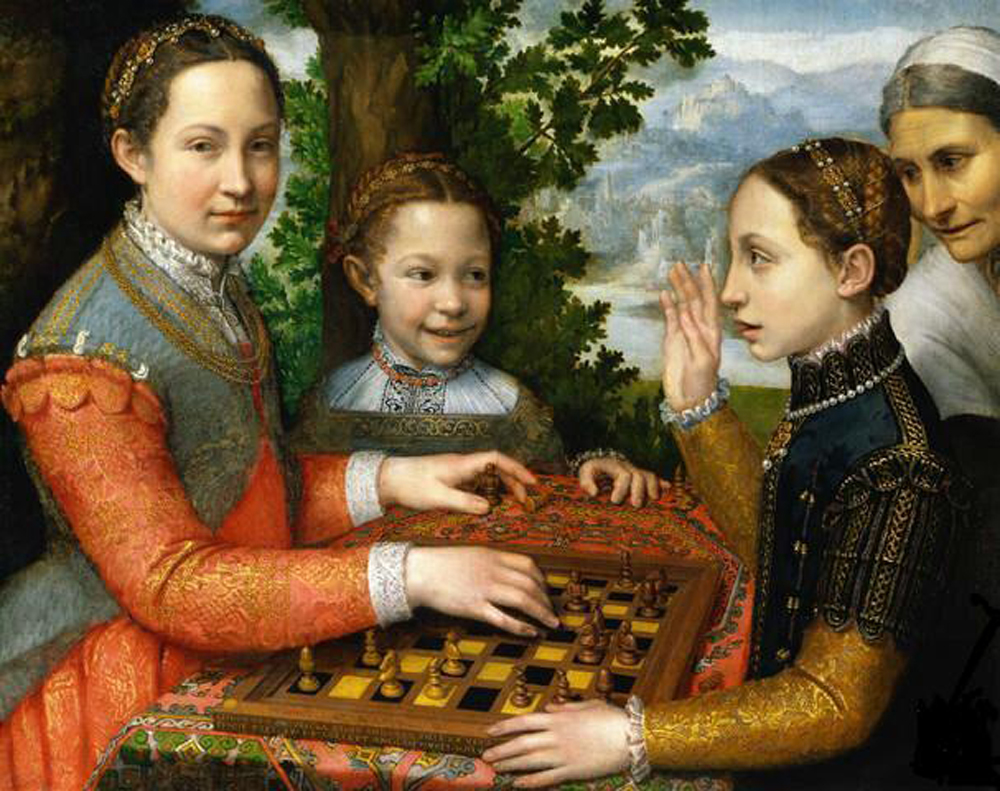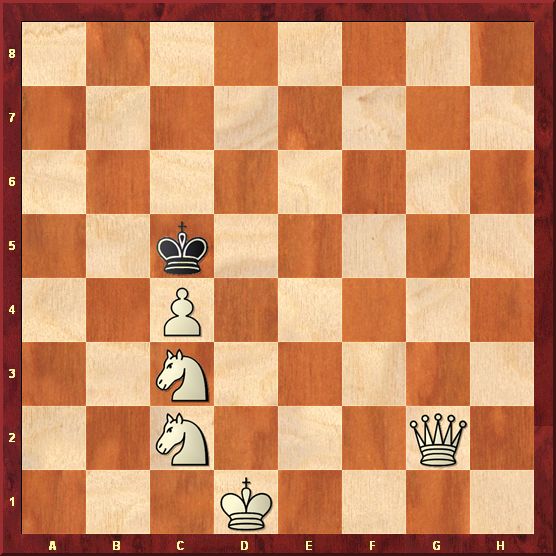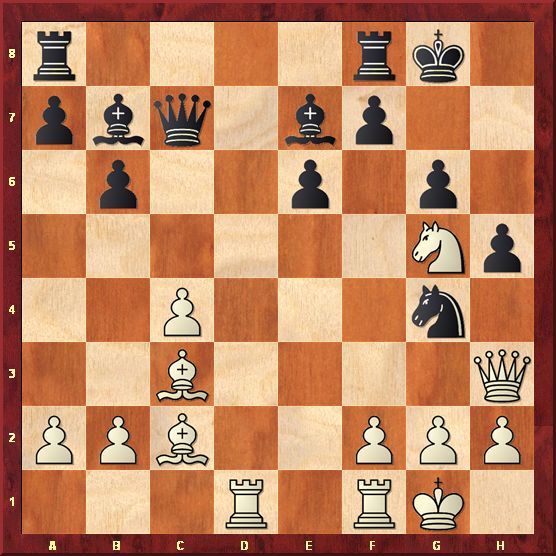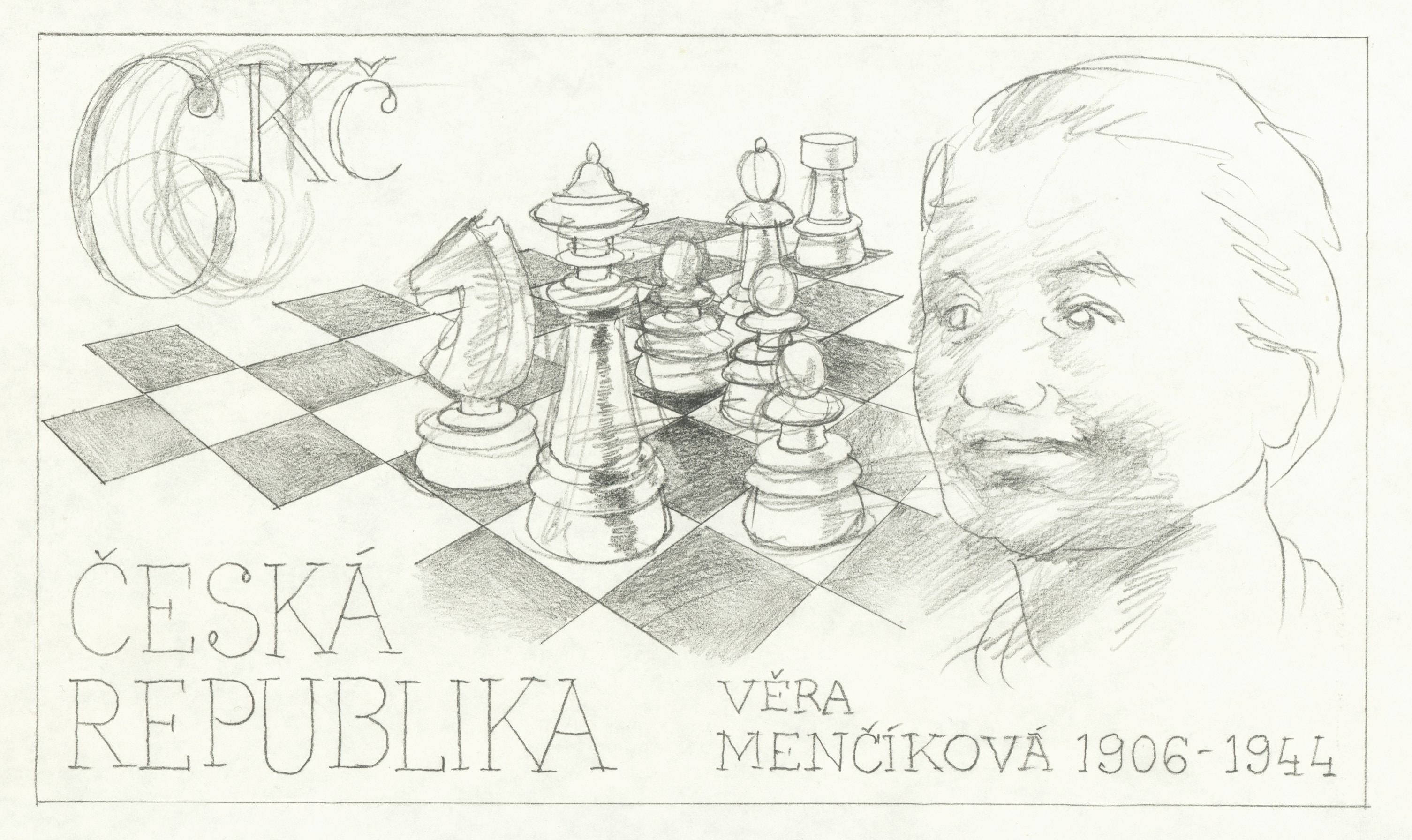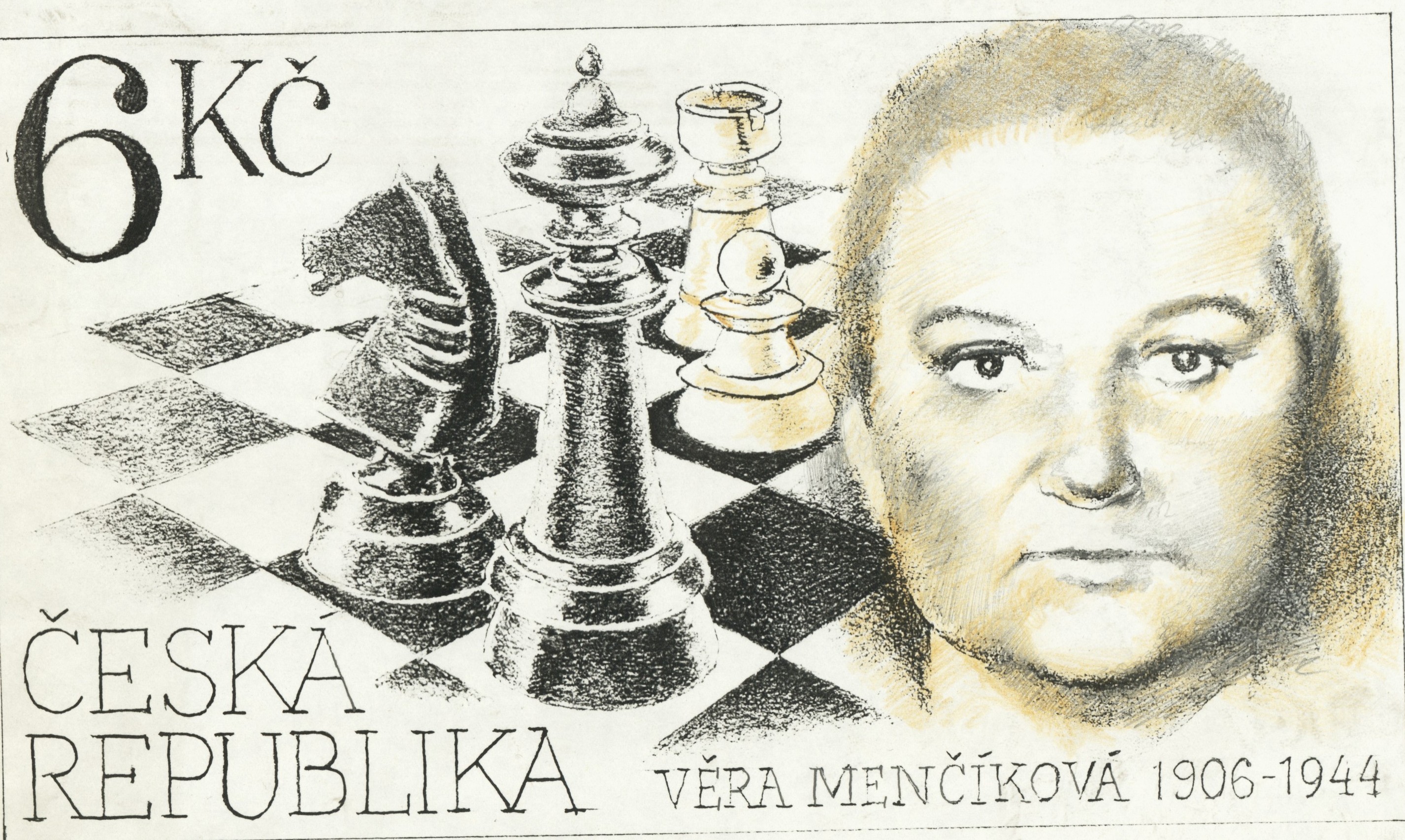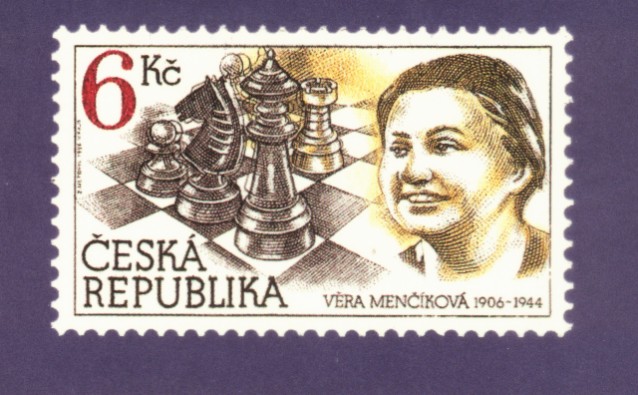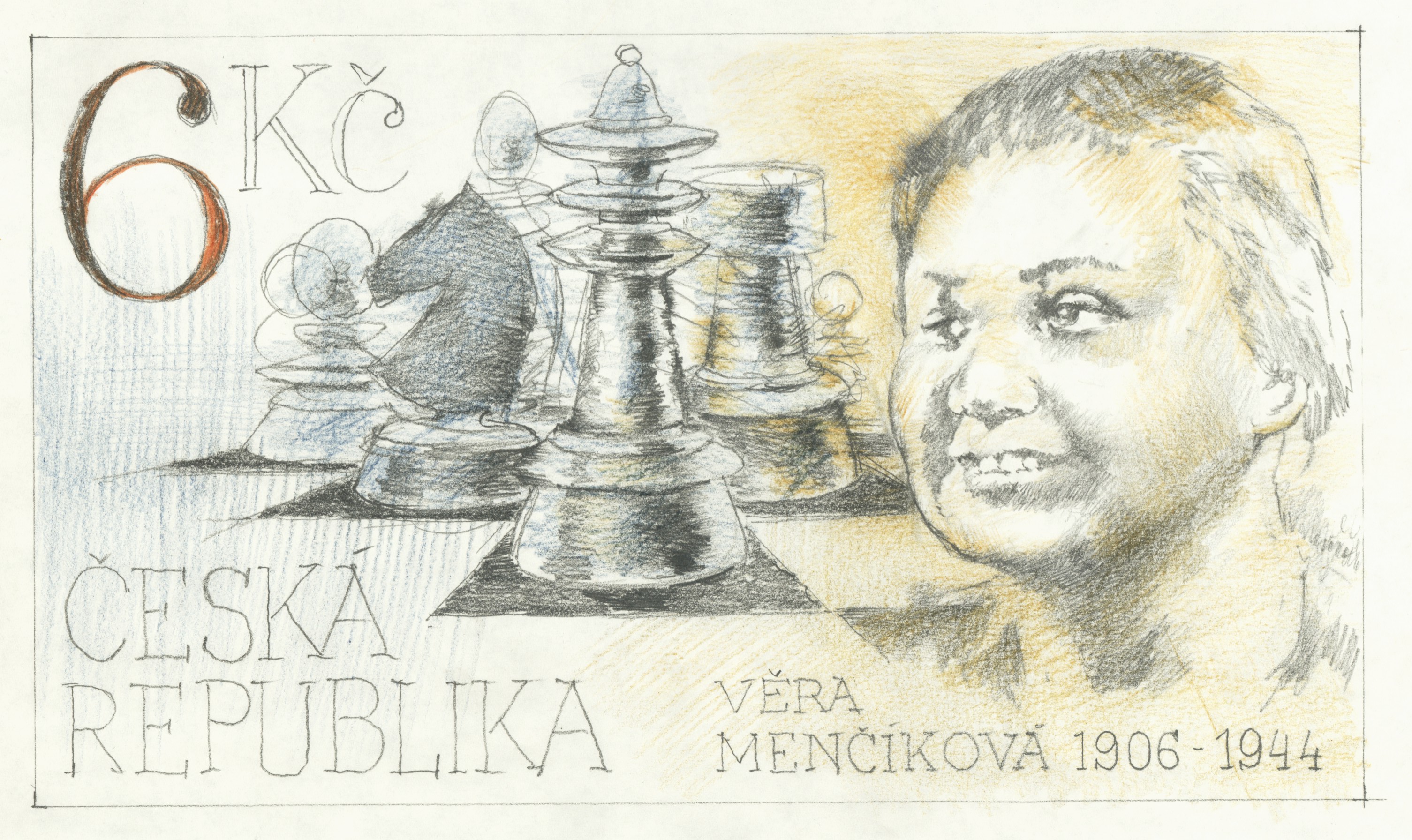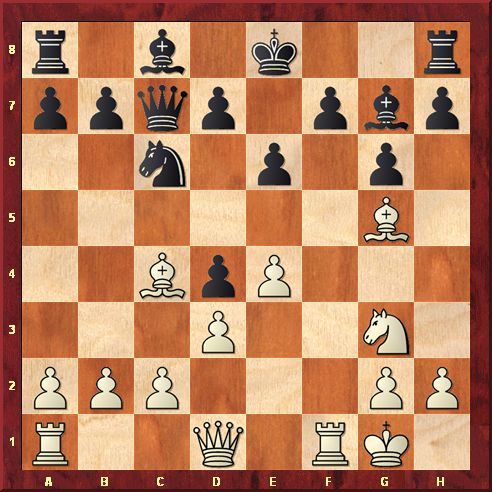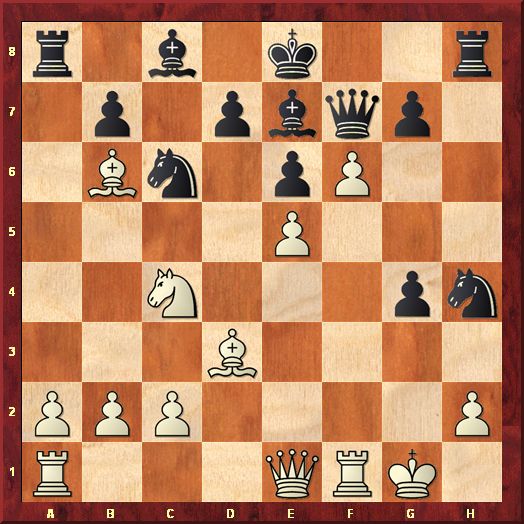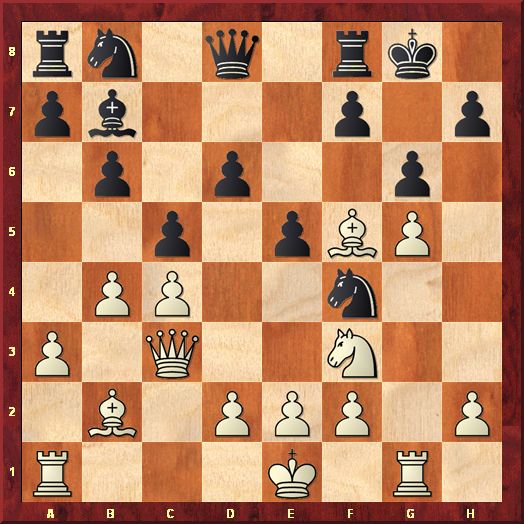Lurking in the background, hiding their identity, they seem mysterious, magical, beautiful. At first, they observed the game from a distance, but as centuries went by, women were drawn closer to the chessboard. Still, for ages they could not play chess in public and it took some courage and determination to break into the male-dominated game. Let's have a look at some who paved the way.
Three Sisters
Women have come a long way since 1555 when the Italian painter Sofonisba Anguissola finished her famous painting "The Chess Game." Did Anguissola play chess? Her patron was the Spanish King Philip II, who also supported Ruy Lopez de Segura, the priest who gave us the Spanish Game (1.e4 e5 2.Nf3 Nc6 3.Bb5). Lopez wrote the chess manual Libro de la invencion liberal y arte del juago del Axedrez in 1561, six years after Anguissola finished the painting of the three sisters Lucia, Minerva and Europa. Did they meet? Did they discuss chess?
We can observe that the chessboard is set up wrong, with the dark square in the right corner - a common occurrence in today's TV commercials. The youngest Anguissola sister is looking at the misfortune of the one to her left, perhaps already aware that one day she would beat them all. But for the time being, the oldest is the best and she looks to the audience as if waiting for applause. They could be the 16th century answer to the Polgar sisters.
from the left: Zsuzsa, Judit and Sophia
Marcel and Eve
Some artists can't resist the temptation to show nude women at the chessboard. We have seen paintings of Madame de Remusat playing chess with Napoleon Bonaparte at the Malmaison castle in 1804. On one canvas she is fully dressed; she plays in the nude on another.
In early 1980s I visited Paul and Mary Belin at their monumental estate Evermay, the largest private property in Georgetown, Washington, D.C. Once inside, Paul showed me a painting of two naked women smoking and playing chess. He acquired it in Paris. "It was banned from public display," he said. "Do you know why?" Nudity would be too obvious, so I chose chess. "No," said Paul triumphantly." Because they smoked cigarettes!"
Nudity was displayed in
Julien Wasser's photo of Marcel Duchamp playing chess with the naked Eve Babitz at the Pasadena Art Museum on October 18, 1963. "I was a naked pawn for art," Babitz confessed in Esquire in 1991. Jennifer Shahade, a former U.S. women's champion and author of
Chess Bitch: women in the ultimate intellectual sport, retaliated in 2009. She came to pose at the chessboard fully dressed, but her male opponent was stripped bare.
Lonely and alone
In the 19th century women began to make inroads into chess. Since they were not allowed to play in chess clubs with the male members, they tried to play against each other. Contrary to popular belief, the all-women chess clubs didn't form in New York in 1894 nor in London in 1895, but in Holland in 1847. According to former world champion Max Euwe, the attempt of the brave Dutch ladies lasted only a year.
Some women were able to follow chess because the game was played in their families. One of them, Edith Winter-Wood, composed some 2000 different chess problems during her lifetime, but was hiding under the name Ms. or Mrs. J. W. Baird. Her works were elegant and precise.
She earned first prize for a three-mover published in Hackney Mercury in 1893.
J. W. Baird
White plays and mates in three moves
1.Qg7! A beautiful key move, limiting black king's options.
1...Kc6 2.c5!! Kxc5 3.Qc7 mate;
1...Kd6 2.Nb5+ Ke6 3.Ncd4 mate;
1...Kb6 2.Nb5 Ka6 3.Qa7 mate; or 2...Kc6 3.Qc7 mate;
1...Kxc4 2.Qd4+ Kb3 3.Qb4 mate.
Another composer was Mathilda Fagan (1850-1931) from Italy. In 1875, her chess problems appeared in the City of London Chess Magazine. She was also a good over-the-board player. But when Fagan won the tournament in the male-dominated Bombay Sports Club in 1882, she was almost disqualified because she was a women.
Even in 1970 the men were still reluctant to play against women. During the tournament in Wijk aan Zee, one of the best Georgian women, Nana Alexandria, and I were supposed to play two separate simultaneous exhibitions. I proposed to Nana to play together an alternate exhibition - one round she, the next round me. The idea went nowhere. "I am not going to play against that woman," said one man and several others nodded in agreement.
It was much better in 1997 when Zsuzsa Polgar and I played an alternative simultaneous exhibition in Washington, D.C. It took place on the eve of the vote in the U.S. Congress to admit Poland, Hungary and the Czech Republic to NATO. Our opponents were all men, some of them Congress members or their assistants, but nobody complained about playing Zsuzsa.
Amazing Menchik
Vera Menchik (1906-1944) was the first women's world champion who could play successfully against the best male players. She almost stirred an international conflict. Three countries claimed her: she was born in Moscow, played chess mostly for Czechoslovakia, married an Englishman and died in London.
Menchik won the first official women's world championship in London in 1927 and defended the title six times in tournaments with an incredible overall score of 78 wins, four draws and one loss. She also defeated the German Sonja Graf in two world title matches in 1934 and 1937. Menchik played positionally most of the time, but she could deliver a nice tactical blow.
Menchik,Vera - Graf,Sonja
Wch (Women) Semmering (14), 13.07.1937
Position after 20 moves
21.Rd7! (A beautiful decoy. The rook deflects the queen, allowing a spirited queen sacrifice: 21... Qxd7 22.Qxh5! gxh5 23.Bh7 mate.
White would have a decisive advantage after: 21...Qxh2+ 22.Qxh2 Nxh2 23.Rxe7 Nxf1 24.Bxg6! e5 25.Nxf7 Kg7 26.Nxe5+ Kf6 27.Rxb7.)
Graf resigned.
The Czechs honored Menchik with a postage stamp designed by Zdenek Netopil. He could not make up his mind, but eventually let her smile. It was issued February 14, 1996. Menchik held her world title for 17 years, the longest of any woman. Last year, she was inducted into the
Chess World Hall of Fame - the first woman among chess giants.
During the 1929 Karlsbad tournament, the Austrian master Albert Becker founded the Vera Menchik Club. He suggested that anyone who loses to the lady should become a member. He was the first victim, but there were others. Among her most famous casualties were dr. Max Euwe and Sammy Reshevsky. Out of 437 tournament games against male opponents, she won 147.
She didn't fare well against the very top players. She was hammered by Jose Raul Capablanca (9-0), Alexander Alekhine (7-0), Mikhail Botvinnik (2-0), Paul Keres (2-0), Reuben Fine (2-0) and Emanuel Lasker (1-0).
In 1921 Menchik's family moved from Moscow to England. Vera was 15. When she saw bottles of milk left outside of English homes, Menchik said: "In Russia, they would immediately be stolen." The quote didn't make it to Elizaveta Bykova's biography of Menchik. Bykova had a different idea of what should be taken.
A Stolen Pawn
It was not an ordinary pawn, but a pawn touched by three world champions. Mikhail Botvinnik's last move of the 1948 world championship was 15.b4. The b-pawn brought the Soviets the first world title and had to be immortalized on film, but Botvinnik was nowhere in sight. The film crew covering the historical moment spotted a boy who demonstrated the game on a big wallboard. His jacket matched Botvinnik's and they asked him to make the move with the b-pawn.
The Soviets had no problem doctoring photographs. Whoever fell out of Stalin's favor disappeared from historical pictures. Now they added a fake hand. It belonged to Jakov Estrin who became the 7th correspondence world champion in 1976.
A few moments later during the celebratory chaos, another hand appeared and removed the b-pawn from the board. Five years later the thief became the women's world champion. The stolen pawn brought her luck. Her name was Elisaveta Bykova and she was the strongest of the three Soviet women who held the world title after Menchik's death.
Dynasties of champions
After World War Two the world title went to Lyudmila Rudenko (1950-1953), Olga Rubcova (1956-1958) and Bykova (1953-1956 and 1958-1962). Since they were not interested in challenging the men, women's chess didn't make much progress.
It all changed with the appearance of two Georgian women who dominated the women's title for nearly 30 years: Nona Gaprindashvili (1962-1978) and Maya Chiburdanidze (1978-1991). They didn't mind competing against men. The more aggressively they played, the more successful they became. The pace of their games quickened, sacrifices multiplied and it was fun to watch them. Women's chess would never be the same.
In the year Garry Kasparov was born, the 22-year-old Gaprindashvili played a nice combination in the 1963 Championship of Georgia, destroying her opponent through the vital square f7.
Gaprindashvili,Nona - Blagidze,Alexander
GEO-ch Georgia, 1963
1.e4 c5 2.Nc3 Nc6 3.f4 g6 4.Bb5 Nd4 5.Bc4 Bg7 6.Nge2 e6 7.Nxd4 cxd4 8.Ne2 Qh4+ 9.Ng3!?(Gaprindashvili shows no fear. The pawn sacrifice allows the white pieces to spring into play.)
9...Qxf4
(White may get some pressure along the f-file. It was better to decline the gift and play 9...Nf6.)
10.d3 Qc7 11.0-0 Ne7 12.Bg5 Nc6?!
(12...d6 or 12...Qc5 would prevent the fireworks.)
13.Nh5! (A prelude to a rook sacrifice.)
13...gxh5 14.Rxf7!!
(An astonishing sacrifice, destroying black king's cover.)
14...Qe5?
(A blunder. After the correct defense 14...h6! 15.Bf4 Be5 16.Qxh5 Kd8 17.Qh4+ Ke8 18.Qh5 white has nothing better but to repeat moves.;
Accepting the rook loses: 14...Kxf7? 15.Qxh5+ Kg8 16.Qe8+ Bf8 17.Rf1 white wins.)
15.Rf5!
(A knock-out. Black loses the queen because after 15...exf5 16.Qxh5+ Kf8 17.Qf7 white mates.)
Black resigned.
The Chinese dynasty began with Xie Jun (1991-1996 and 1999-2001). She learned tactics from the traditional Chinese chess - xiangqi - and brought her experience to the chessboard. Already at 15, she was the girl with Adolf Anderssen's combinational talent. In the game against her coach Qi the pieces collided with speed. It was brutal, imaginative, colorful. Another assault against the square f7.
Xie Jun - Qi Jingxuan
Shanghai, 1985
Position after 23 moves
24.Qxh4!! (The queen sacrifice, utilizing the weak black squares, is the most elegant way to victory.)
24...Rxh4 25.fxe7 Qf3
(Other moves lose, for example 25...Qg8 26.Bc5 d6 27.Rf8+ Qxf8 28.exf8Q+ Kxf8 29.Bxd6+ Ke8 30.Nb6 wins; or 25...Qh5 26.Rf8+ Kxe7 27.Bc5+ d6 28.Bxd6+ Kd7 29.Nb6 mate.)
26.Be4!
(A series of amazing bishop moves leading to a win.)
26...Nxe5
(Other moves don't help either: 26...Qxe4 27.Nd6+ Kxe7 28.Rf7 mate; or 26...Kxe7 27.Bxf3 gxf3 28.Bc5+ Kd8 29.Rxf3 Rxc4 30.Bd6! closing the mating net: Rf3-f8 mate will follow soon.)
27.Bd8!
(The black king is surrounded by white's dangling pieces.)
21...Nf7 28.Bg6 Ra6 29.Ne5 Qe3+ 30.Rf2 Black gets mated on the square f7.
Black resigned.
Xie was the role model for other Chinese girls. They looked up to her and went after the world title with gusto. They were Zhu Chen (2001-2004), Xu Yuhua (2008-2010) and the current women's champion, the 18-year-old Hou Yifan (2010-).
The Chinese dynasty was briefly interrupted by world champions Zsuzsa Polgar (1996-1999), Antoaneta Stefanova of Bulgaria (2004-2006) and Alexandra Kosteniuk of Russia (2008-2010).
And that brings us to the Polgar sisters. When they were very young, they had to choose: mathematics or chess. They made the right choice. Competing mostly against men, they progressed rapidly and won many titles. Zsuzsa became the women's world champion.
Without a doubt, Judit is the all-time best woman chessplayer. During her career she defeated many strong male players and world champions such as Kasparov, Anatoly Karpov and Vishy Anand. In 2005, she was rated number eight in the world with her FIDE peak rating of 2735.
In January, Judit Polgar and Hou Yifan met in Gibraltar. Just another game, said some. A historical contest between the Queen and the Princess, thought others.
Hou won. She is climbing all alone. Can she reach Judit's heights so far unattainable to other women?
Nostalgia
Champions come and go and we wish them well. But before they say the final goodbye, we demand another masterpiece. At the 2004 olympiad in Calvia, Spain, Zsuzsa Polgar and Maya Chiburdanidze obliged. Their tactical skills did not diminish with age and they gave us a memorable performance. And again, the square f7 played a major role in Zsuzsa's combination.
Polgar,Zsuzsa - Chiburdanidze,Maya
36th Olympiad w Calvia ESP (6), 20.10.2004
1.Nf3 Nf6 2.c4 e6 3.Nc3 Bb4 4.Qc2 0-0 5.a3 Bxc3 6.Qxc3 c5 7.b4 b6 8.Bb2 d6 9.g4!
(A vintage Polgar! Where others look to increase a small positional advantage, the Polgar sisters go after the king.)
9...Bb7 10.g5 Nh5 11.Rg1 e5 12.Bh3 Nf4 13.Bf5
(Provoking the next mistake.)
13...g6?
(The weakening of the long diagonal allows a beautiful combination. The queen on c3, supported by the bishop on b2, can now "see" as far as the square h8. Developing the knight 13...Nc6 gives black a good game.)
14.Nxe5! Nxe2
(A good idea, but the wrong move-order. Black should have played: 14...Qe7 15.Be4 dxe5 (15...Bxe4 16.Nc6 Nd3+ 17.Kf1+-) 16.Bxb7 and only now 16...Nxe2! 17.Kxe2 Qxb7 18.Qxe5 f6 19.Qe6+ Rf7 20.gxf6 and although white is clearly better, black can still fight.;
After 14...dxe5? 15.Qxe5 f6 16.Qxf4 wins.)
15.Nxf7!!
(Creating mating threats. Wrong would be 15.Kxe2 dxe5 16.Qxe5? Re8.)
15...Nxc3
(After 15...Kxf7 16.Qg7+ Ke8 17.Bf6 white wins; and on 15...Rxf7 16.Qh8 mates.)
16.Nh6+ Kg7 17.Bxc3+ Rf6 18.Bxf6+ Qxf6 19.gxf6+ Kxh6 20.Be6?!
(This wins slowly. Interestingly, Polgar who was drilled in mating finales, missed to swing her rook from a1 to h3, for example: 20.Rb1! gxf5 [20...Bf3 21.Rb3 Bh5 22.Be4 wins; 20...Nc6 21.Rb3 and the rook goes to mate on h3; 20...Nd7 21.Bxd7 wins.] 21.Rb3 and black gets mated.)
20...Nc6 21.Bd5 (The pin.) 21...Rf8 22.f7 Nd8 23.Bxb7 Nxb7 24.Rg3 Rxf7 25.Re3 (The rook made it to the open file.) 25...Nd8 26.b5 (Taking away the square c6.) 26...Rf4 27.d3 d5 28.Re7! (The rook on the 7th rank limits the knight.) 28...dxc4 29.dxc4 Nf7 (After 29...Rxc4 30.Rd1 Rd4 31.Rxd4 cxd4 32.Rxa7 the b6-pawn falls shortly.) 30.Rd1 Ng5 31.Rxa7 Rxc4 32.Ra6 Rc2 33.Rxb6 c4 34.a4 Ra2 35.Ra6 Nf3+ 36.Kf1 Nd2+ 37.Rxd2! (Simplifying into a clearly won rook endgame.) 37...Rxd2 38.Rc6 Rc2 39.b6 Black resigned.





